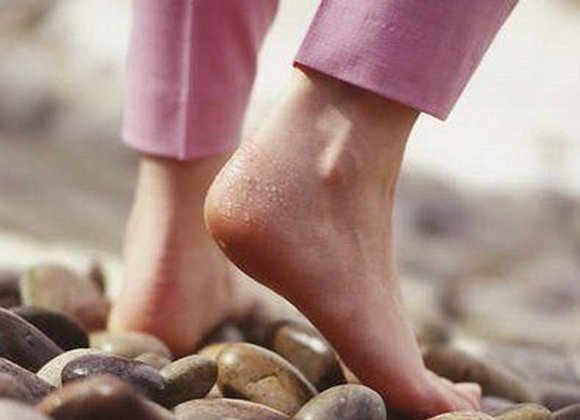Like rehab and general fitness training, athletic performance is highly dependent on the brain and nervous system. Since the brain’s first priority is survival, its protective mechanisms often set the body’s limits too conservatively, “hitting the brakes” in moments of exertion and unnecessarily reducing performance to prevent injury.
With the NeuFit® Method, we can use targeted neurological interventions to change the brain’s soft- ware programming. When we change this programming, we can release limiting patterns driven by the brain’s survival bias and significantly improve athletic performance.
By combining electrical stimulation from the Neubie® device with strategic mobility drills and other general and sport-specific exercises and techniques, we can help athletes perform at their peak. In addition, we can enhance their ability to sustain peak performance and maximize their individual genetic potential.
What Role Does Genetics Play in Athletic Performance?
When it comes to athletic ability, it’s common for people to assume that they’re prisoners of their genes. However, according to sports scientist Michael Yessis, Ph. D., only 30 percent of athletic potential is genetic. The remaining 70 percent is based on environmental factors like training, nutrition, and lifestyle decisions.¹
The truth is the majority of athletes never actually reach their full genetic potential. Why? It comes down to two factors:
- Training: Training too little or too much, not training consistently for a sufficient amount of time to achieve long-term progress, and/ or not training in a way that stimulates positive neurological and physical adaptations.
- Lifestyle: Poor eating and/or sleeping habits, along with other lifestyle choices (like drinking excessive amounts of alcohol) that diminish the body’s ability to recover outside of training.
Take an athlete with a high genetic ceiling who doesn’t train long or hard enough to reach it. When they compete against an athlete with a little less natural talent who trains harder and smarter, they lose most of the time.
Ultimately, the ideal combination is the best genetics coupled with the best training and lifestyle. But we find Dr. Yessis’s message—that it’s still possible to achieve high levels of performance even without the best genes—both inspiring and accurate.
Preparing the Body for Optimal Performance
Many athletes assume they need to spend the majority of their training time practicing the skills unique to their sport. But here’s the bottom line: it’s difficult to get the full benefits from directed skill work without first laying a foundation of basic movement proficiency, endurance, strength, and speed.
In other words, before a hockey player can master skills like skating, passing, and shooting, she/he needs to train their body to move efficiently, handle stress well, and effectively recover from a challenge. Since all of these attributes are neurological in nature, we can develop and strengthen them by working at the level of the nervous system.
Without this neurological work, the benefits of doing focused skill training are limited. Sooner or later, athletes hit an artificial ceiling when it comes to their progress. This artificial ceiling can manifest in a variety of ways: a tendency toward injury, energetic inefficiency (leading to fatigue), and/or diminished performance.
Obviously, different types of athletes need different approaches to training. The optimal training program for a marathon runner is different from that of a hockey player; a powerlifter doesn’t train the same way a sprinter does.
At the same time, the brain and nervous system play a key role for all athletes, regardless of their sport. For athletes who want to push the envelope of their physical capabilities, integrating a neurological approach into their training is essential.
In our next blog we are going to present three neurological training principles that apply to elite athletic training: overtraining, specificity of adaptation, and the performance pyramid.
Let’s charge forward to better (athletic) outcomes together!
¹ Michael Yessis, Build a Better Athlete: What’s Wring with American Sports and How to Fix It (Terre Haute, Indiana: Equilibrium Books, 2006).

